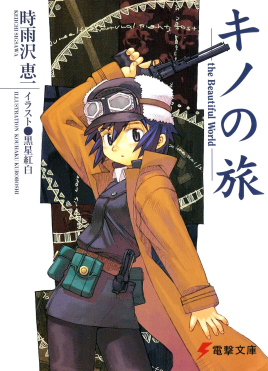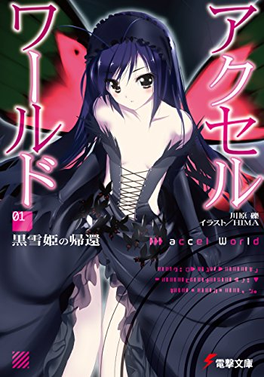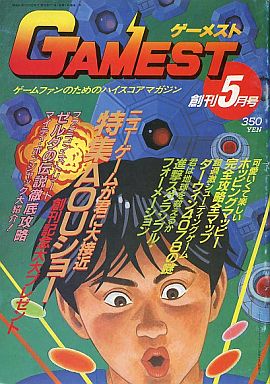
ASCII, abbreviated from American Standard Code for Information Interchange, is a character encoding standard for electronic communication. ASCII codes represent text in computers, telecommunications equipment, and other devices. Because of technical limitations of computer systems at the time it was invented, ASCII has just 128 code points, of which only 95 are printable characters, which severely limited its scope. Many computer systems instead use Unicode, which has millions of code points, but the first 128 of these are the same as the ASCII set.

ASCII art is a graphic design technique that uses computers for presentation and consists of pictures pieced together from the 95 printable characters defined by the ASCII Standard from 1963 and ASCII compliant character sets with proprietary extended characters. The term is also loosely used to refer to text-based visual art in general. ASCII art can be created with any text editor, and is often used with free-form languages. Most examples of ASCII art require a fixed-width font such as Courier for presentation.

ASCII (アスキー) was a monthly released microcomputer magazine in Japan, published by ASCII Corporation from 1977. It targeted business users who used a personal computer in their home and office, but it sometimes introduced computer games and computer music. It was also known as the Monthly ASCII (月刊アスキー) written along with the title from Vol. 2 No. 4, and distinguish with the Weekly ASCII founded in 1997. The ASCII was rebranded as the Business ASCII (ビジネスアスキー) in 2008, and ceased in 2010. Its news website and the Weekly ASCII are continuing as in 2016.

ASCII Corporation was a Japanese publishing company based in Chiyoda, Tokyo. It became a subsidiary of Kadokawa Group Holdings in 2004, and merged with another Kadokawa subsidiary MediaWorks on April 1, 2008, becoming ASCII Media Works. The company published Monthly ASCII as the main publication. ASCII is best known for creating the Derby Stallion video game series, the MSX computer, and the RPG Maker line of programming software.

Enterbrain (エンターブレイン), formerly Enterbrain, Inc., is a Japanese publisher and division of Kadokawa Future Publishing founded on 30 January 1987 as ASCII Film Co., Ltd.. Magazines published by Enterbrain are generally focused on video games and computer entertainment as well as video game and strategy guides. In addition, the company publishes a small selection of anime artbooks. Enterbrain is based in Tokyo, Japan, with a paid-in capital of 410 million yen. Enterbrain's current president is Hirokazu Hamamura.
Fighter Maker(格闘ツクール, Kakutō Tsukūru) is a series of games for PlayStation consoles and Microsoft Windows. It features a robust character creation system, letting players even create animations. There are two versions of the games, Fighter Maker and 2D Fighter Maker.

Shakugan no Shana, also known simply as Shana (シャナ), is a Japanese light novel series written by Yashichiro Takahashi with illustrations by Noizi Ito. ASCII Media Works published 26 novels from November 2002 to November 2012 under their Dengeki Bunko imprint. The story focuses on Yuji Sakai, a high school boy who inadvertently becomes involved in an age-old conflict between forces of balance and imbalance in existence. In the process, he befriends a fighter for the balancing force and names her "Shana". The series incorporates fantasy and slice of life elements into its tale.
A text game or text-based game is an electronic game that uses a text-based user interface, that is, the user interface employs a set of encodable characters, such as ASCII, instead of bitmap or vector graphics.

Fray in Magical Adventure, also known as just Fray (フレイ) and Fray-Xak Epilogue (Gai-den), is a 1990 spin-off "gaiden" (sidestory) game in a role-playing video game series Xak developed and published by the Japanese software developer Micro Cabin. Even though it is directly connected to the more serious Xak storyline, Fray has a less serious tone and light-hearted comedic approach to telling the story. It was originally released for the MSX2 and was later ported to several different systems, among them MSX turbo R, PC-9801, PC Engine, and Game Gear.

Little Busters! is a Japanese visual novel developed by Key. It was released on July 27, 2007 for Windows PCs and is rated for all ages. Little Busters! is Key's sixth game, along with other titles such as Kanon, Air, and Clannad. An adult version of the game titled Little Busters! Ecstasy was released on July 25, 2008 for Windows, unlike Kanon and Air, which were first released with adult content and then had later versions with such content removed. Ecstasy was later ported to the PlayStation 2, PlayStation Portable, PlayStation Vita, PlayStation 3, and Nintendo Switch with the adult content removed under the title Little Busters! Converted Edition. An English version for Windows was released on Steam in 2017. The story follows a group of childhood friends now attending high school called the Little Busters, as they decide to form a baseball team. Riki, who is diagnosed with narcolepsy, is tasked to recruit more girls in preparation for a baseball game, and he bonds with each of them on account of their internal conflicts. Meanwhile, Rin gets mysterious letters from her cat Lennon to complete various tasks to learn the "secret to this world".

ASCII Media Works, formerly ASCII Media Works, Inc., is a Japanese publisher and brand company of Kadokawa Future Publishing headquartered in Nishi-Shinjuku, Shinjuku, Tokyo, Japan. It originally formed on April 1, 2008, as a result of a merger between ASCII Corporation and MediaWorks where MediaWorks legally absorbed ASCII. Despite this, the former president and CEO of ASCII, Kiyoshi Takano, became the first president and CEO of ASCII Media Works. It became an internal division of Kadokawa Corporation on October 1, 2013.

The Idolmaster Live For You! is a live simulation video game developed and published by Namco Bandai Games for the Xbox 360. It was released in Japan on February 28, 2008, as a sequel to The Idolmaster. The gameplay in Live For You! focuses on coordinating the concert event from The Idolmaster with higher customization of the songs, stage and costumes. The game features a rhythm minigame during performances, which was developed to add a sense of unity with the audience and add excitement. The player is also able to freely manipulate how the performance looks by adjusting the position of the camera towards the idols. The story is told from the perspective of a special producer in charge of coordinating the live performances of 11 pop idols from The Idolmaster series.
MediaWorks, Inc. was a Japanese publishing company in the Kadokawa Group known for their Dengeki brand magazines and book labels. These included such well-known magazines as Dengeki Daioh, and Dengeki G's Magazine, along with MediaWorks' main light novel publishing imprint Dengeki Bunko. The company was merged with ASCII on April 1, 2008, and became ASCII Media Works. They mainly catered to the Japanese male otaku crowd, covering such topics as anime, light novels, manga, plastic modelling, and visual novels. However, MediaWorks had published three magazines targeted towards females—Comic Sylph, Dengeki Girl's Style, and Character Parfait—but each one was a special edition version of another magazine. MediaWorks ran yearly contests for original novel and manga submissions, such as the light novel Dengeki Novel Prize contest.

Kino's Journey —the Beautiful World—, shortened to Kino's Journey, is a Japanese light novel series written by Keiichi Sigsawa, with illustrations by Kouhaku Kuroboshi. The series follows a traveler named Kino and her talking motorcycle named Hermes, as they explore countries with unique customs and people around a mysterious world, only spending three days at each location. The series originally started serialization in volume five of MediaWorks' now-defunct light novel magazine Dengeki hp on March 17, 2000. The first volume of the series was published on July 10, 2000 by ASCII Media Works under their Dengeki Bunko publishing imprint. As of November 2020, 23 volumes have been published.

Accel World is a Japanese light novel series written by Reki Kawahara and illustrated by HiMA. The series began publication in ASCII Media Works' Dengeki Bunko imprint from February 2009 and is licensed in North America by Yen Press. Two manga series began serialization in Dengeki Bunko Magazine from May 2010, with another series beginning serialization in Dengeki Daioh in January 2013. An anime adaptation by Sunrise aired in Japan between April and September 2012. An English-language version began streaming on Viz Media's Neon Alley service from April 2013. Two video games were released for the PlayStation Portable and PlayStation 3 in September 2012, and January 2013, each containing an original video animation episode. An anime film titled Accel World: Infinite Burst featuring an original story by Kawahara premiered in Japan in July 2016.

The Pet Girl of Sakurasou is a Japanese light novel series written by Hajime Kamoshida, with illustrations by Kēji Mizoguchi. ASCII Media Works published 13 volumes between January 2010 and March 2014. A manga adaptation illustrated by Hōki Kusano was serialized ASCII Media Works' Dengeki G's Magazine and Dengeki G's Comic.

Love Live! School Idol Project is a Japanese multimedia project co-developed by ASCII Media Works' Dengeki G's Magazine, music label Lantis, and animation studio Sunrise. It is the first multimedia project in the Love Live! franchise. The project revolves around a group of nine schoolgirls who become idols in order to save their school from shutting down. It launched in the August 2010 issue of Dengeki G's Magazine, and went on to produce music CDs, anime music videos, two manga adaptations, and video games.

Tales of Xillia 2 is an action role-playing game for the PlayStation 3 released on November 1, 2012, in Japan. It is the fourteenth core product in the Tales series and was developed and published by Bandai Namco Games. The game was localized for North America and Europe in August 2014.
Kamikaze Explorer! is a Japanese adult visual novel developed by Clochette. It was first released for Windows PCs on May 27, 2011. Kamikaze Explorer!'s story follows the main character Keiji Hayase, and takes place in the future, where the younger generation use a special power called Metis. The gameplay follows a branching plot line which offers pre-determined scenarios with courses of interaction, and focuses on the appeal of the five female main characters by the player character.

Gamest was a Japanese video game magazine that specialized in covering arcade games. Published by Shinseisha, it first began in May 1986 and originally published bi-monthly, later changed to be a monthly-issued magazine in the late 1980s. The magazine also featured the annual "Gamest Awards", which hands out awards to games based on user vote. The magazine had a heavy-focus on shoot 'em up arcade games, but would also cover games from other genres. Gamest originated from the bi-monthly fanzine VG2 Newsletter from the early 1980s. The magazine ran for several years, with its final issue being released in September 1999. Following the bankruptcy of publisher Shinseisha, many editors would move to ASCII and create a successor magazine, Monthly Arcadia.















